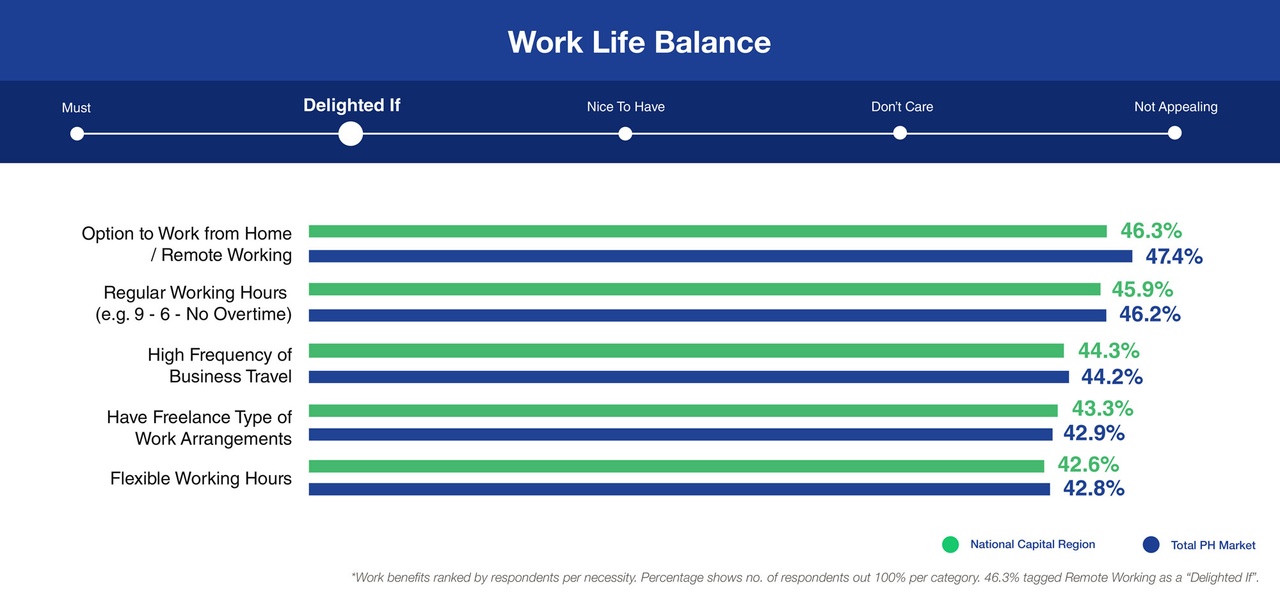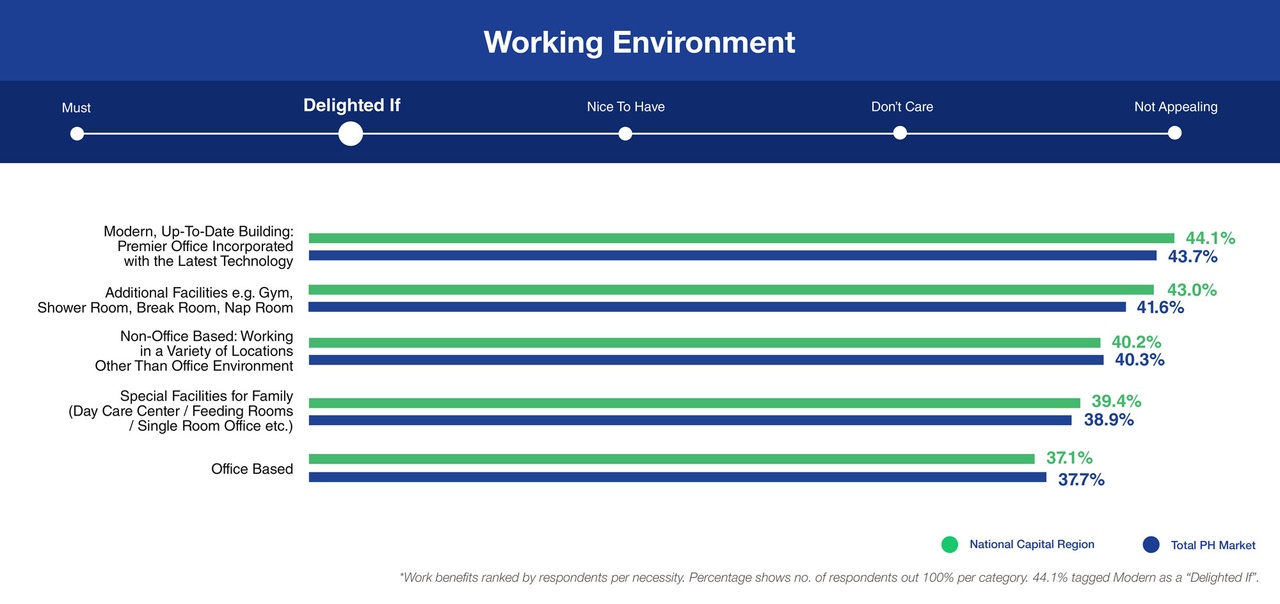
Hear your employees! Real Filipinos reveal their thoughts about working from home
Because when employers know what employees need, both sides will work more effectively.
With the cases of COVID-19 growing exponentially in the Philippines, more and more companies are forced to send their workers home. Thanks to technology, it is still business as usual for companies that can function with employees working remotely.
A digital workforce
As the use of technology grows rampantly in the global workforce, more and more employees around the world are seeking companies that are innovative and tech-savvy. And did you know
that employees in Metro Manila are no exception? In fact, the option of working from home, through the power of technology, is desirable for the majority of Filipino workers. And now that the COVID-19 pandemic is among us, no generation wants to be exempted from this privilege.
Let’s explore the data from LOA Data Lab: Among all Filipino employees, 47.4% would be delighted if they were offered a remote work setup. This has been the case even before the COVID-19 outbreak.

This also translates to the Filipino employee’s preference in his or her working environment. Most desire for a company with a good grasp of technology. And now that the workforce is facing a crisis, it’s high time for your company to follow suit.

In the midst of the mandatory community quarantine that Metro Manila is experiencing, we are seeing that the desires of Filipinos for innovation and digital communication will actually help save companies. Since the COVID-19 outbreak, more companies have been adopting the work-from-home setup. Now, the question for most HR workers is: Is this set-up actually efficient?
What do real Filipino employees think of working from home?
Mark, 26, is a data analyst for a health maintenance organization. With his job in the IT industry, it isn’t his first time working from home. And, Mark admits that he mostly enjoys the flexibility of this setup—the distractions of Netflix and the opportunity for unlimited snacking aside.
However, Mark shares that even if he’s in the IT industry, working from home is not without its troubles—especially now that it’s their team’s first time working from home simultaneously. “The common problem we get is if one of my teammates doesn’t have a stable connection to the internet. Another thing is the connection to our servers, and there is no infra support to check on it.”
While Mark seems to be positive with the work-from-home setup, not every employee is as thrilled to be away from their office.
Tina, 27, is an administrative assistant for a healthcare laboratory. Her job entails handling paperwork, filing documents, and generating reports. Because of the COVID-19 pandemic, she—along with her colleagues—has been working from home for a week now.
“I love the idea of working from home,” she shares. “It’s less (of a) hassle and (less) stress, especially since I’m not commuting anymore.” Normally, Tina leaves her house at 5 am to get to work on time. She arrives home at 8 pm.
Still, even with the inconvenience of commuting, Tina would still rather work at the office. “With my tasks involving organizing invoices and other paper documents, I don't think I'm productive working from home,” she shares. “My work focuses on invoices and other paper documents for order processing, and I can't bring the papers home because we're not allowed to. All I get to do while I’m at home is check e-mails and answer calls from account managers.”
How can working from home be more effective?
1. Establish an environment of trust
“Working from home is built on trust, and this is evident with my team,” says Mark. According to him, the environment of trust is the reason why working from home is effective for their team.
Building trust in the workplace is easier said than done. What you can work on, for the time being, is establishing an open line of communication among your workers. Start with encouraging the management to be more transparent with the employees. Especially with a crisis like this, workers will appreciate regular updates.
Mark further shares, “Before we transitioned to our work-from-home setup, we had a town hall meeting to discuss the business continuity plan. They listened to our sentiments, then gave us vitamins and alcohol!
“Now, the office is still open for those who want to go, but our CEO announced that a work-from-home setup would be implemented for the whole week until further notice. The management continues to give us updates on a daily basis—this gives me high morale and assurance that they are on top of (the crisis).”
2. Give deadlines
Stephanie, 28, is a continuous improvement specialist. She, like most Filipino employees, likes the option of working from home. She shares, “When I am given a specific set of weekly targets, I gain a sense of responsibility and accountability.”
With this, Stephanie sheds some light on how companies can better enforce the work-from-home setup. “My advice for companies is to set friendly guidelines that will help the employees achieve their targets while giving them the freedom to choose if they want to work-from-home or not.”
3. Track the performance of employees
If you are wary about letting loose, there is an option to track your employees. For some companies, they create their own database for this.
“To track our performance, the management gave us access to our employee portal for the DTR (daily time record). We send end-of-day reports to our managers,” Mark shares.
If your company isn’t capable of doing such, you can utilize outside tools to track the internet usage of your employees. Tools like TimeDoctor will allow you to monitor the websites and apps your employee uses during work hours.
Instead of stressing out about the changing times, allow innovation and digitalization to ensue from this mandatory community quarantine. After all, it’s high time to get with the times and prepare for the future! Ultimately, the better you know your employees, the better you will be able to handle any situation. Get to know your employees through JobStreet’s LOA, where you get access to comprehensive studies of over 18,000 Filipino candidates across 25 industries. It’s now or never!